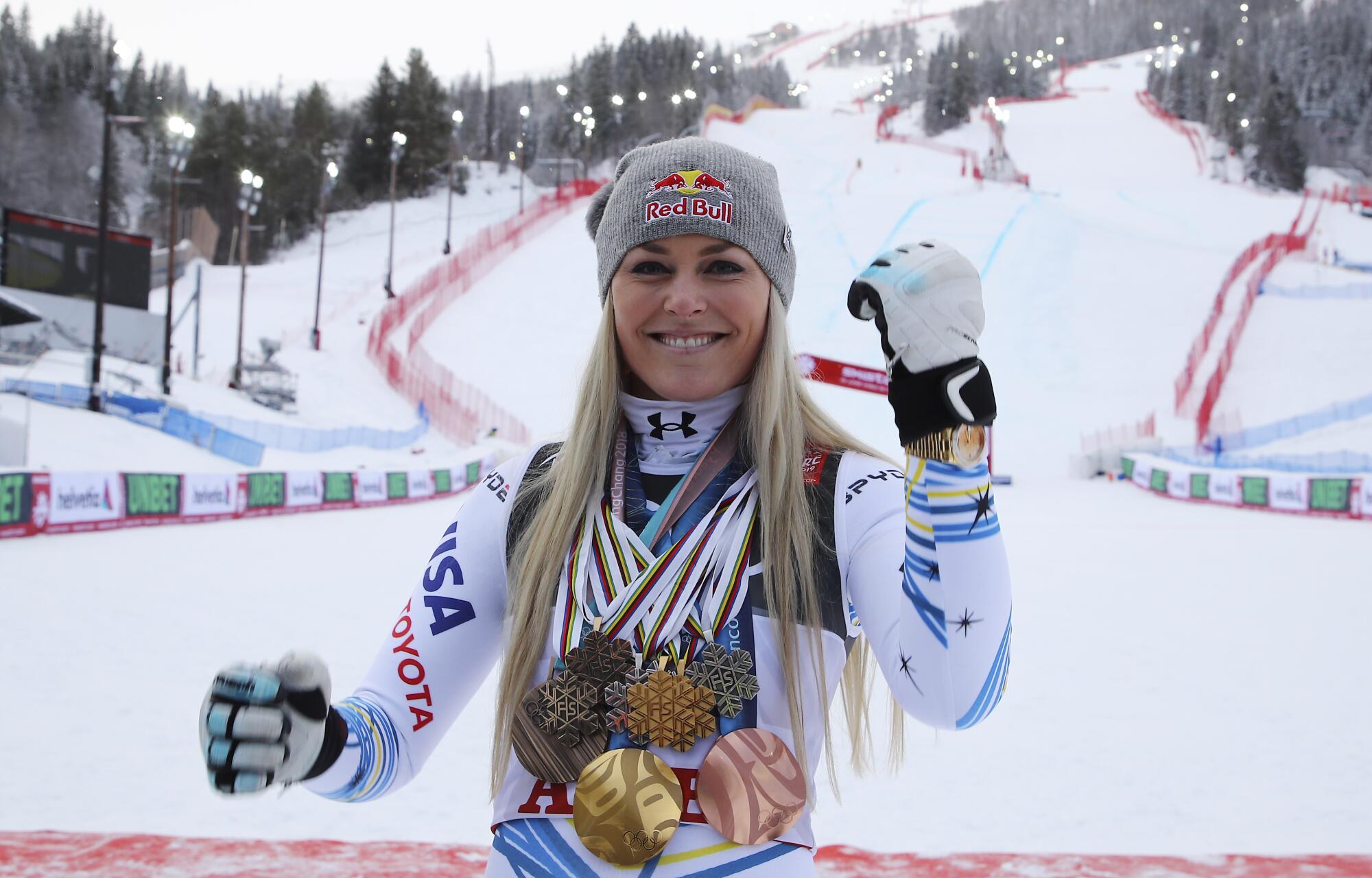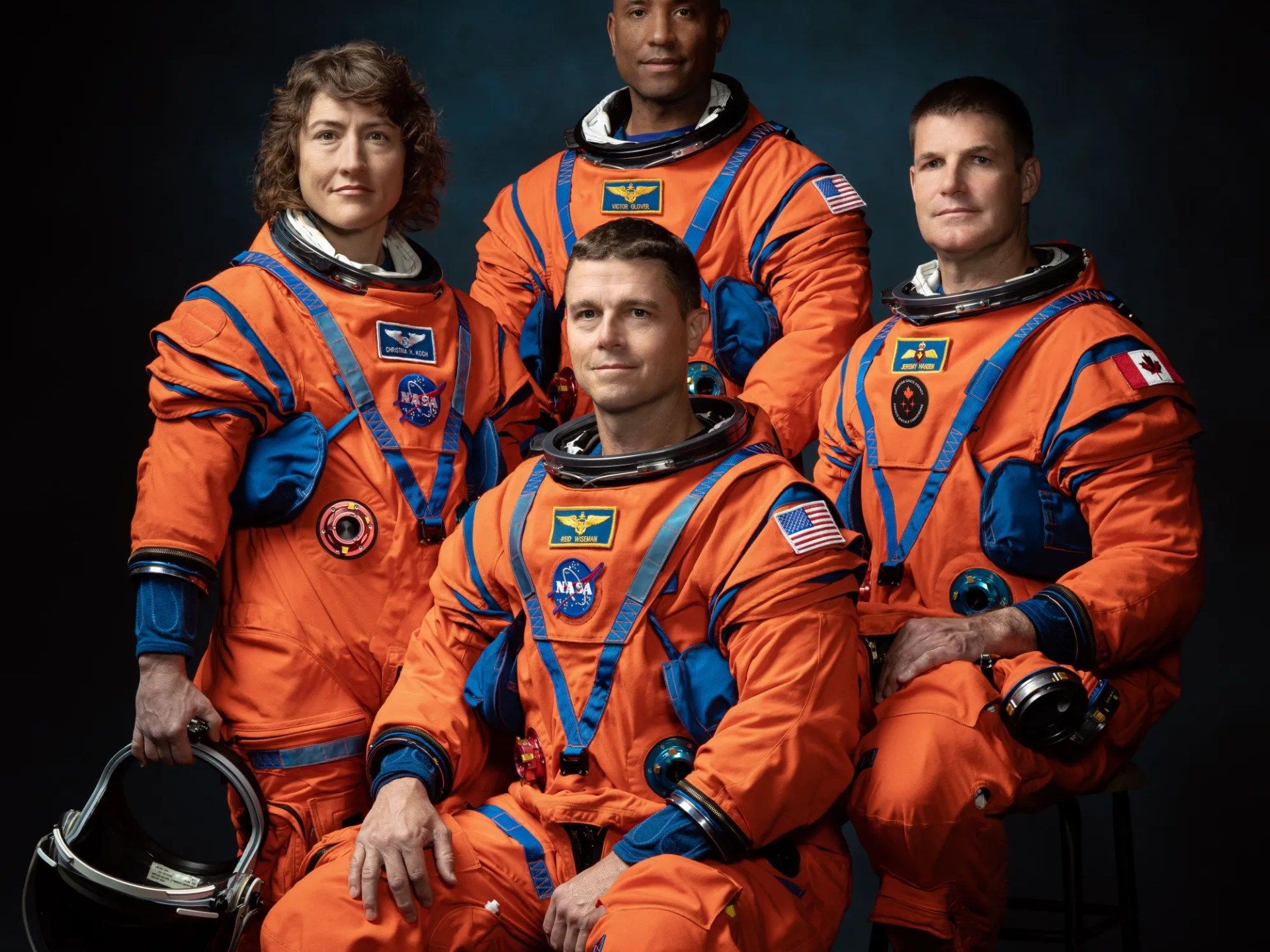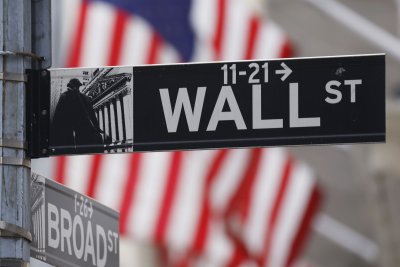Lindsey Vonn says Olympic comeback is fueled by love of skiing
NEW YORK — When Lindsey Vonn retired from Alpine skiing in 2019, she walked away from the sport as one of the most successful skiers in history. Six years later she’s coming back, with her sights set on competing in a fifth Winter Olympics in February in Cortina d’Ampezzo, Italy.
But regardless of how that comeback ends, Vonn isn’t worried about it detracting from what she’s already accomplished.
“This is different because I had nothing to prove,” said Vonn, 41, who climbed a World Cup podium for the first time since 2019 when she finished second at the super-G season finals in Sun Valley, Idaho, last March.
“I don’t think anyone remembers Michael Jordan’s comeback. I don’t think that’s part of his legacy at all,” she continued. “I’ve already succeeded. I’ve already won. I was on the podium. I have the record for the oldest medalist in World Cup by seven years [she set the previous record in 2019]. I feel like this journey has been incredible.”
American Lindsey Vonn poses in 2019 with medals she has won throughout her career in the finish area at the alpine ski world championships in Are, Sweden.
(Marco Trovati / Associated Press)
Vonn has three Olympic medals, but she won her only gold 15 years ago. She’s won eight World Championship medals, but just one since 2017; her last gold came in 2009. But the comeback isn’t so much about rekindling that past as it is about shoring up the present.
“I closed my career, and I definitely would like to close that chapter in maybe a better way than I did in 2019,” said Vonn, who was speaking Tuesday at the U.S. Olympic Committee’s Media Summit in Manhattan. “I feel like I am happy, free. I’m doing it because I love it. I’m not doing to prove anything to anyone.”
Vonn missed the 2014 Winter Games with a right knee injury, an injury that led to her retirement in 2019. But after partial knee-replacement surgery last year, she decided she wasn’t done with skiing yet.
“After the replacement, I knew things were really different,” she said. “My body felt so good, and I just kind of kept pushing myself further and further to see what I was capable of. Skiing and racing seemed like the logical next step.”
American Lindsey Vonn skis during a women’s super-G run at the World Cup finals on March 23 in Sun Valley, Idaho.
(Robert F. Bukaty / Associated Press)
She’s a different skiier than she was when first started competing internationally two decades ago, she said.
“I have a lot more perspective now, having been away from the sport for six years,” she said. “That just allows me to compete in a different way and I think that gives me an advantage actually.
“Downhill skiing has a lot to do with with accumulated knowledge. And I’ve obviously accumulated a lot of knowledge, because I’ve raced for a very long time.”
Vonn, whose comeback landed her on the cover of this week’s Time magazine, said she’s in the best shape of her career. But she still must earn enough points on this winter’s World Cup circuit to qualify for the Olympics.
She said she probably wouldn’t have considered racing at a top level again if next February’s Games weren’t schedule for Cortina, where’s won a record 12 career World Cup races. She also recorded her first of 138 World Cup podiums in Cortina in 2004.
“My goal has always been Cortina again. It’s such a special place for me,” she said.
American Lindsey Vonn speeds down the course during an alpine ski women’s World Cup downhill race in Kvitfjell, Norway, on Feb. 28.
(Gabriele Facciotti / Associated Press)
“I didn’t want to set that as a goal, because I didn’t know if I would even be able to compete, let alone qualify or finish the season. Once I trained more and I got in better shape, I said to myself that this is an attainable goal. I can do this.”
And if she can’t, that won’t detract from the fact that she tried. Or from what she’s already accomplished.
“I’m at peace with where I am in my life,” she said. “I don’t need to be ski racing, but I definitely love to ski race and have nothing to prove. So I don’t feel like I have a lot of pressure, even though my dad says it’s the most pressure I’ve ever had in my whole life.”



